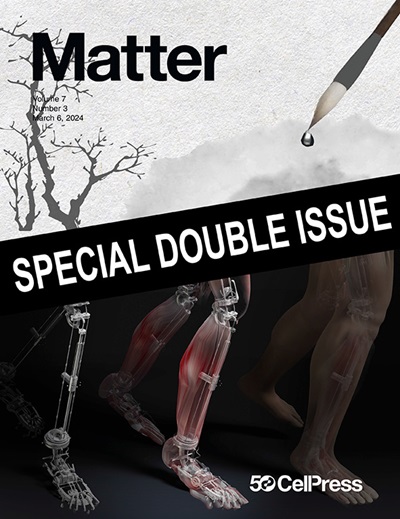IF 17.3
1区 材料科学
Q1 MATERIALS SCIENCE, MULTIDISCIPLINARY
引用次数: 0
摘要
铂及其衍生物具有高反应活性和稳定性,是氢进化反应(HER)的理想电催化剂。尽管已成为氢进化反应的工业标准,但由于沥滤风险的增加,高电流密度仍然令人望而却步。在此,我们报告了一种实用且可扩展的策略,即采用多孔芳香族框架(PAF-260、-261 和 -264)膜代替商用 Nafion 粘合剂来制备极其稳定的铂基电极,从而使铂纳米催化剂充分暴露,并加快电子和质量传输。所有电极都表现出卓越的 HER 性能,可在安培级电流密度下连续工作 1000 小时以上而不会失去活性。在整个多孔框架中精确放置铂锚定硫官能团,可实现电催化剂的均匀分布,即使在高碱性环境中也能持续产生氢气。这项研究的设计原则可以开发出坚固耐用的电解器,加快向可再生燃料的过渡。本文章由计算机程序翻译,如有差异,请以英文原文为准。


Binder-free Pt/PAF membrane electrodes for durable, high-current-density hydrogen evolution
Pt and its derivatives, with their high reactivity and stability, are ideal electrocatalysts for the hydrogen evolution reaction (HER). Despite being the industrial standard in HERs, high current densities remain prohibitive due to the increased risk of leaching. Here, we report a practical and scalable strategy to prepare extremely stable Pt-based electrodes employing porous aromatic framework (PAF-260, -261, and -264) membranes instead of commercial Nafion binders to render fully exposed Pt nanocatalysts as well as faster electron and mass transfer. All electrodes exhibit excellent HER performances, continuously operating for more than 1,000 h at ampere-level current densities without losing activity. The precise placement of Pt-anchoring sulfur functionalities throughout the porous framework enables the homogeneous distribution of electrocatalysts that deliver continuous production of hydrogen, even in highly alkaline environments. The design principles from this study could unravel robust electrolyzers that could accelerate the transition to renewable fuels.
求助全文
通过发布文献求助,成功后即可免费获取论文全文。
去求助
来源期刊

Matter
MATERIALS SCIENCE, MULTIDISCIPLINARY-
CiteScore
26.30
自引率
2.60%
发文量
367
期刊介绍:
Matter, a monthly journal affiliated with Cell, spans the broad field of materials science from nano to macro levels,covering fundamentals to applications. Embracing groundbreaking technologies,it includes full-length research articles,reviews, perspectives,previews, opinions, personnel stories, and general editorial content.
Matter aims to be the primary resource for researchers in academia and industry, inspiring the next generation of materials scientists.
 求助内容:
求助内容: 应助结果提醒方式:
应助结果提醒方式:


